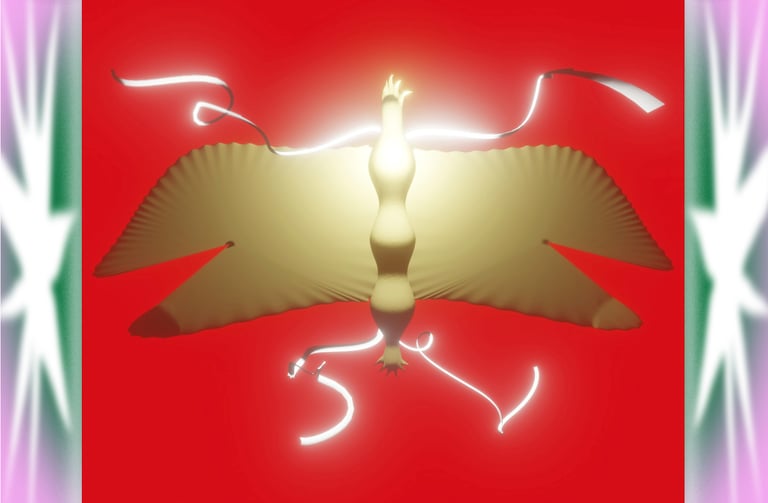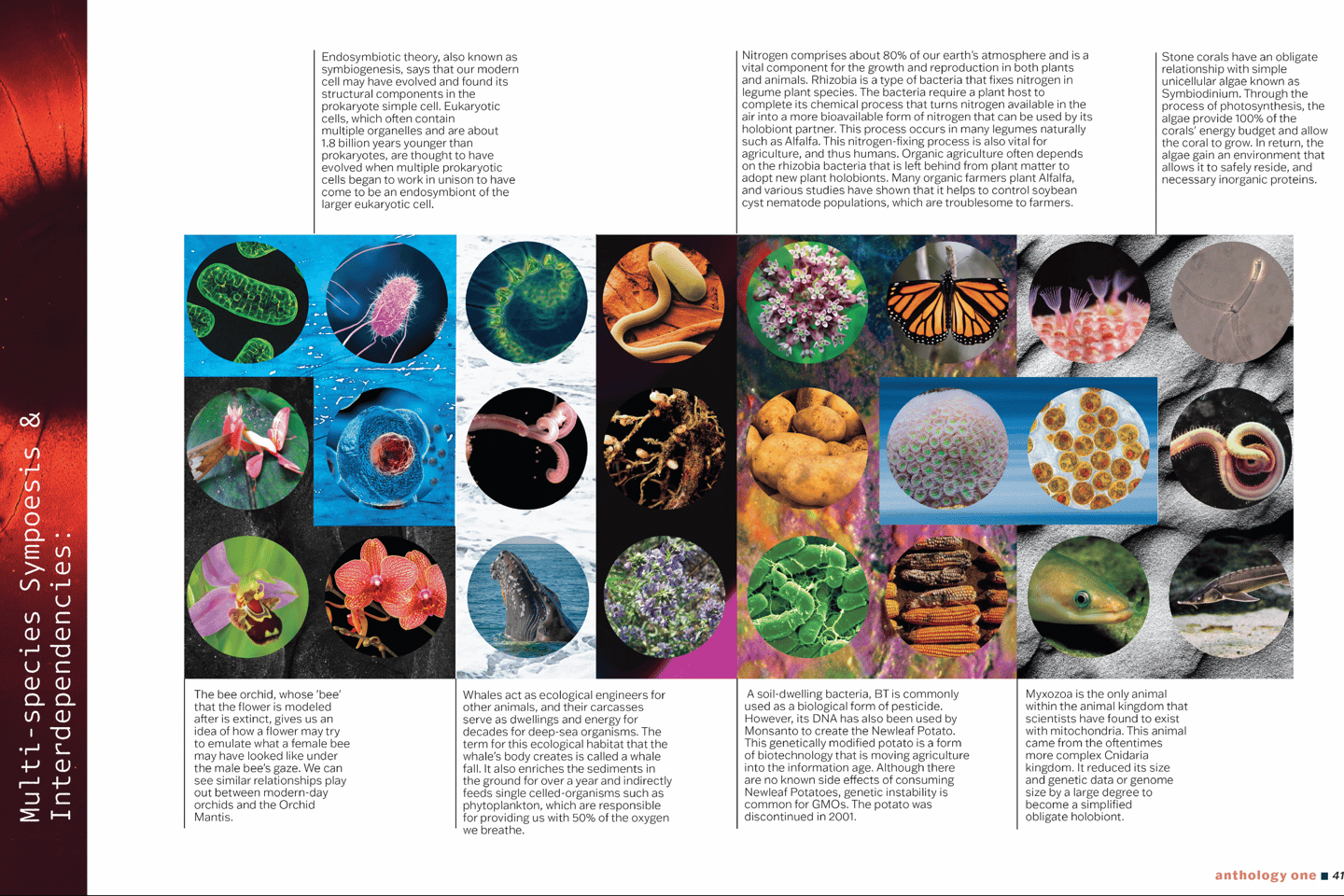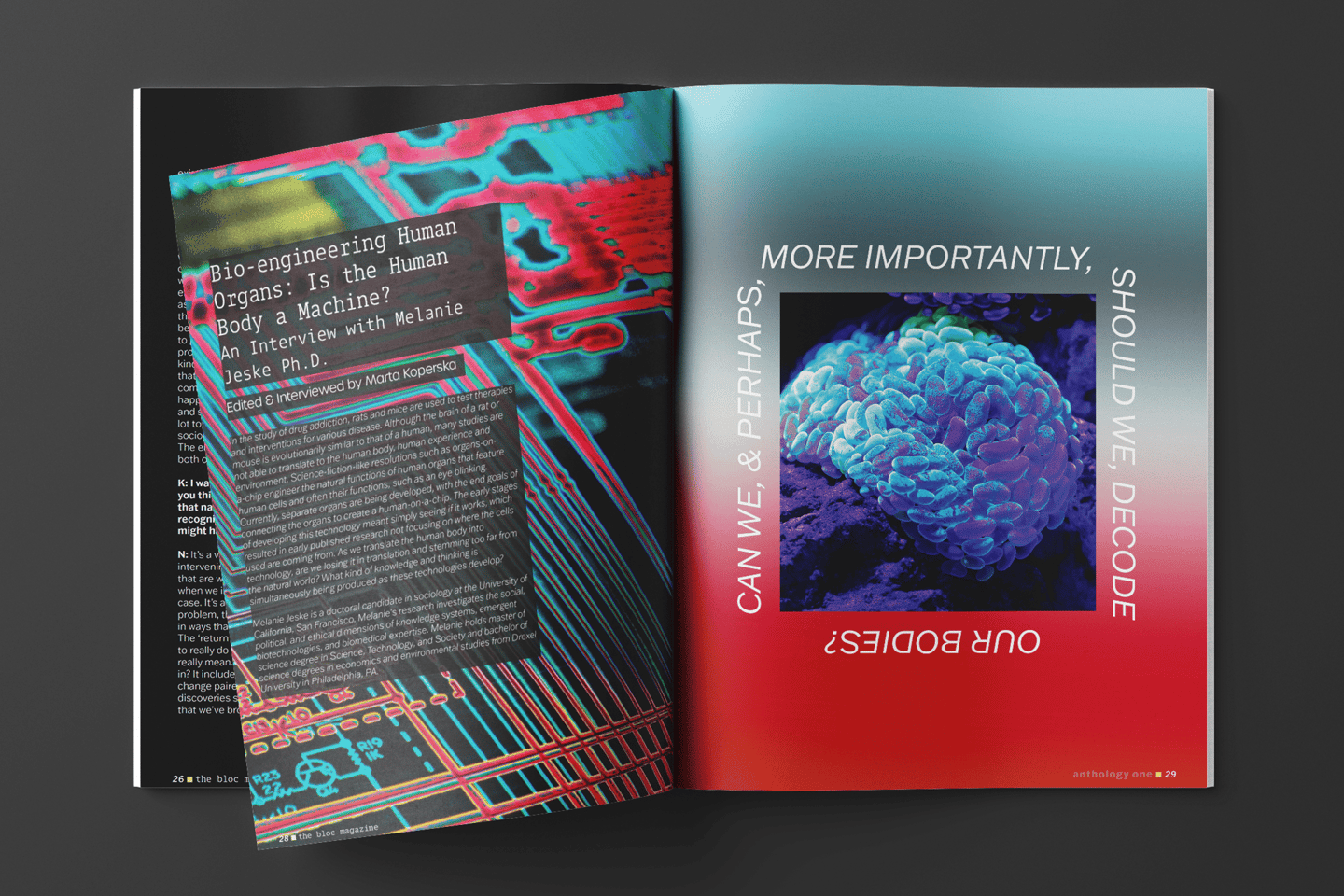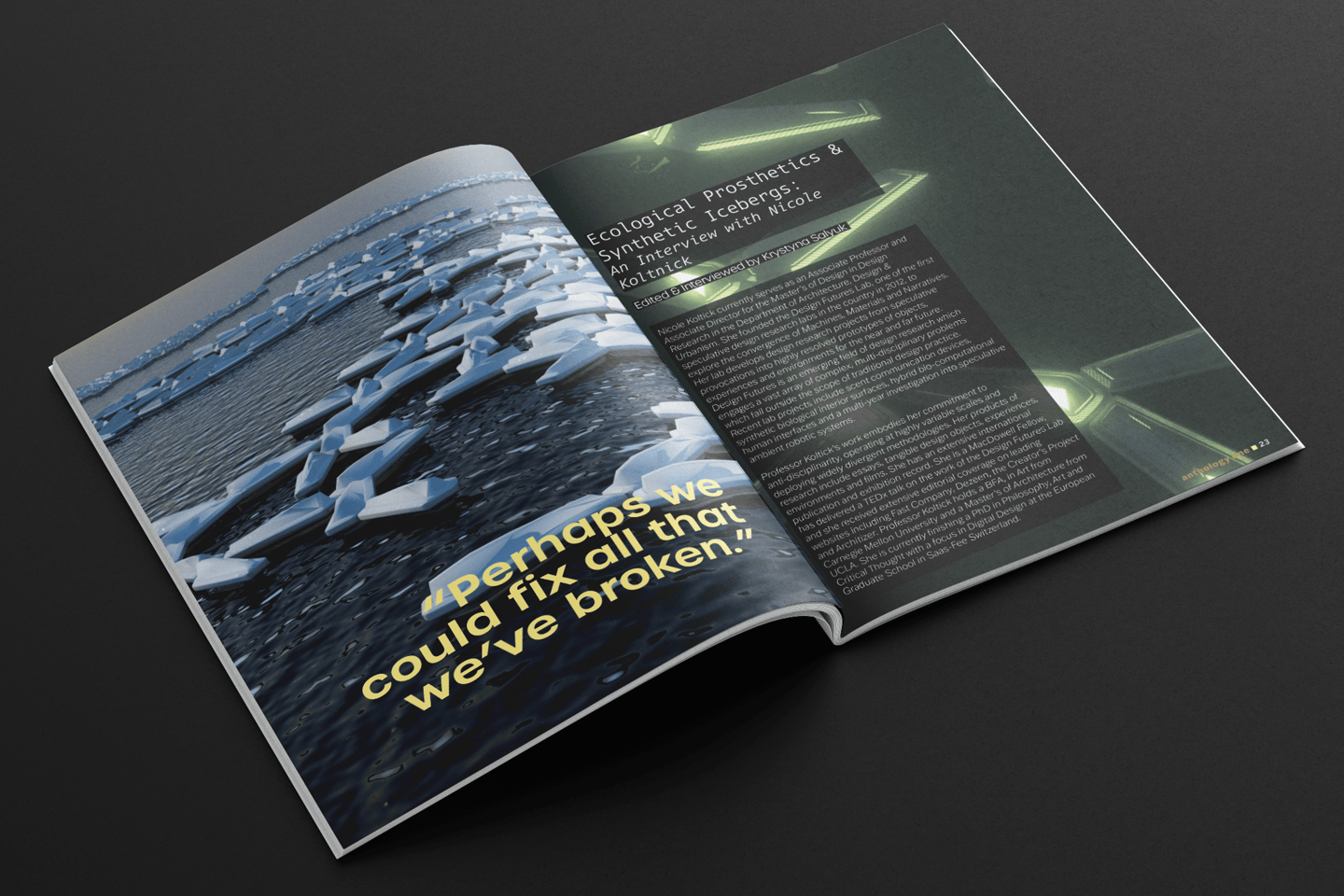
I created a cross-disciplinary magazine at the intersection of art, design, and science. I collaborated with researchers from the MIT Media Lab, professors, artists, and students across the country to explore environmental and climate issues through a creative lens. I developed and pitched the vision for the project, securing grant funding through a formal presentation process. As both project lead and designer, I managed collaboration across disciplines while shaping the editorial direction, visual identity, and layout design. The publication served as a national platform for bridging scientific insight and artistic expression—sparking new conversations and innovative approaches to today’s most urgent ecological challenges.
Project Overview
CREATIVE DIRECTION
PROJECT MANAGEMENT
GRANT WRITING
EDITORIAL DESIGN
Scope of Work
Timeline
6 Months
Concept Development
SPECULATIVE FUTURES AND ECOLOGY


The concept for the magazine was grounded in extensive research spanning design theory, speculative futures, and environmental studies. I immersed myself in the writings of Donna Haraway, explored Indigenous architectural perspectives through texts like Lo–TEK, and investigated emerging frameworks in design research that challenge dominant paradigms. This included ideas like “diagramming for insects” (Joãos article), ecological prototyping, and other experimental methodologies that reframe how we relate to the natural world. These diverse perspectives informed the magazine’s editorial voice and visual language, helping shape a publication that was as intellectually rigorous as it was visually compelling.


Artwork featured in the magazine by Rithika
Editorial Design
The editorial design aimed to visually embody the magazine’s central theme: the intersection of science, ecology, and imagination. I developed a branding direction that felt both futuristic and earthy, bringing the past and the future into one space. The microscopic and the grand. I wanted to dive deep into Donna Haraway’s world—exploring microorganisms and the microcosms they inhabit—while also zooming out to view systems on a larger scale. My goal was to blend elements of the future and the past, the monumental and the minute. In one layout, microbes were used to evoke the shape of a human brain; in another, I connected the narrative of future species extinction by juxtaposing imagery of icebergs and dinosaurs. Inspired by Haraway’s concept of the holobiont—a living system made up of interdependent parts—I designed the visual elements to work together as a storytelling system, each component essential to the whole.




Reflection and Impact
This project challenged me to think beyond traditional design boundaries and operate at the intersection of systems thinking, storytelling, and speculative design. Navigating between research, concept development, and execution, I strengthened my ability to communicate complex ideas visually and lead multi-stakeholder collaborations. The magazine not only sparked meaningful conversations between artists and scientists but also demonstrated the power of design to bridge disciplines and inspire new ways of seeing the world. It remains one of my most formative experiences—reminding me that design can be a tool not just for communication, but for reimagining futures. The research journey and the formation behind the philosophy of the magazine allowed me to dive deeply into my curiosity.